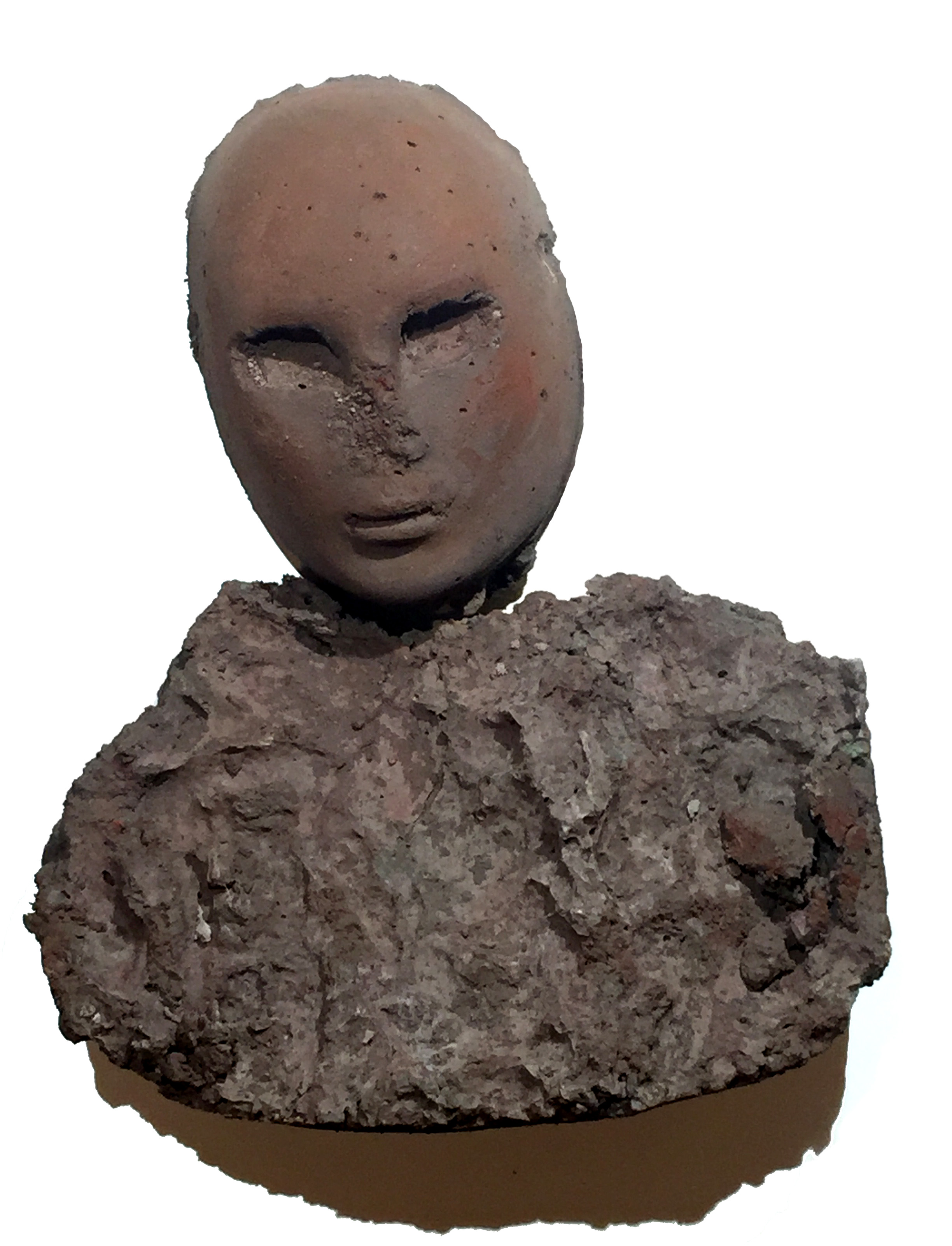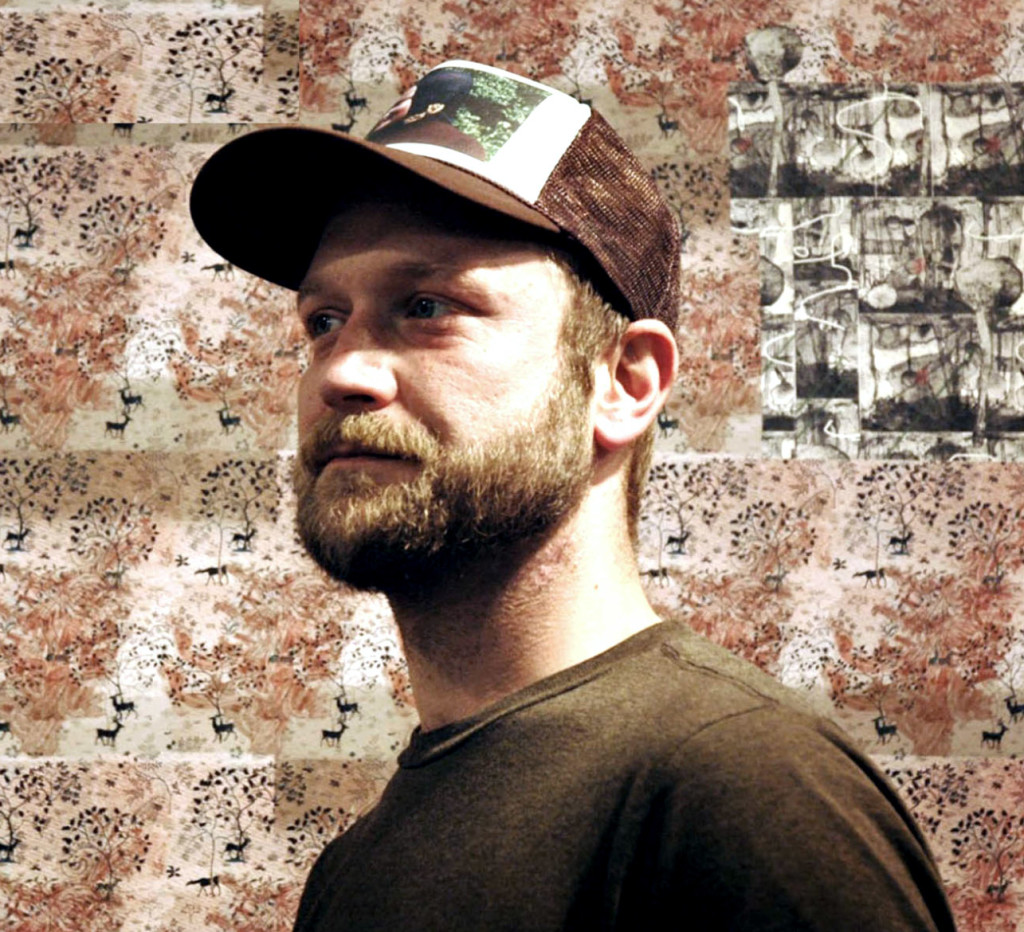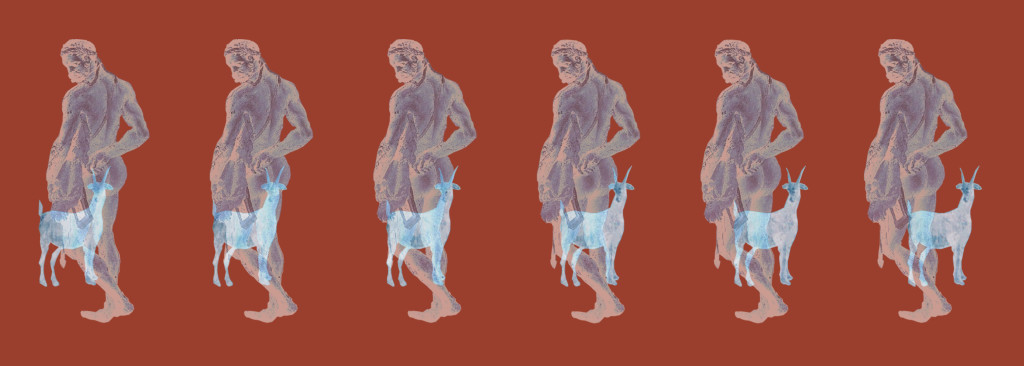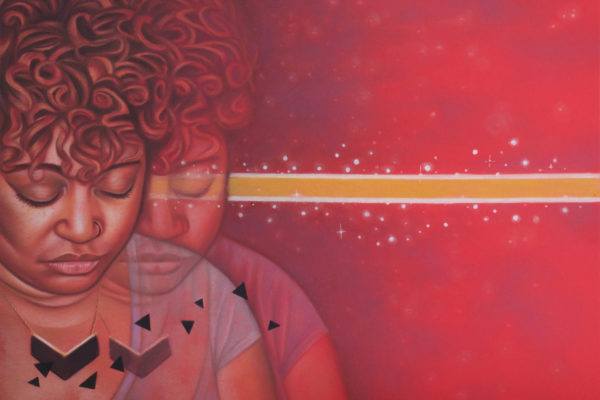 When Quinn Wolff-Wilczynski was 19, a chiropractor told him (in “an anti-mystical but rather safely clinical office”) that he’d experienced several past lives, including as a witch burned at the stake. Today, the 33-year-old artist lives his current life in Cabbagetown, creating original pieces and working on the Parallel Georgia Project, a resource he co-founded for self-taught artists in Georgia. He was also selected as a 2014-2015 EhvaLAB Studio Resident, and has participated in group and solo shows in Provincetown, Columbia, and Atlanta.
When Quinn Wolff-Wilczynski was 19, a chiropractor told him (in “an anti-mystical but rather safely clinical office”) that he’d experienced several past lives, including as a witch burned at the stake. Today, the 33-year-old artist lives his current life in Cabbagetown, creating original pieces and working on the Parallel Georgia Project, a resource he co-founded for self-taught artists in Georgia. He was also selected as a 2014-2015 EhvaLAB Studio Resident, and has participated in group and solo shows in Provincetown, Columbia, and Atlanta.
In anticipation of Wolff-Wilczynski’s new show Axis Mundi, a collection of experimental sculpture and two-dimensional works coming to Collective One Gallery at the Westside Cultural Arts Center from February 6th to March 5th, we talked to the artist about inspiration, his favorite fellow artists and what else he’s got in store for 2016.
CommonCreativ: What first sparked your interest in art?
Quinn Wolff-Wilczynski: In the introduction to Passages in Modern Sculpture, Rosalind Krauss discusses simultaneity of experience in the sculptural piece—that, according to some, the difference between sculptors and more lyrical artists is that sculptors design a piece to exist in space, rather than in time. I like this idea of the moment of unified absorption, of collapsed experience—that static art is not a chronological experience. It’s like the climactic sentence of a long story or the punchline of a joke that’s already been told. This moment is intimately tied to what first intrigued me about sculpture as an art form.
CC: How would you describe your artistic style in one sentence?
QWW: Unpredictable, I’d hope.
CC: Tell me about the Parallel Georgia Project.
QWW: My partner, Andrew Forrest Baker, and I created the Parallel Georgia Project with the purpose to give opportunities to self-taught artists. I consider myself self-taught. Some of the art world’s challenges, such as gallery representation or connecting art with the public, are general to many artists, but some, such as dealing with certain preconceptions or skill expectations, are specific to autodidacts. We had some great successes with the program, including the chance to exhibit two incredibly talented artists—Legendary Grant Mullins and Greg Painter—at the WonderRoot Gallery. And we learned a great deal. While right now we are on a short hiatus, we are looking forward to either picking the program back up or discovering new methods of playing our parts in creating opportunities within the Atlanta arts community.
CC: Who are some of your favorite fellow artists in Atlanta?
QWW: Rachel Garceau, Tyrus Lytton, Jessica Scott Felder; Lauren Michelle Peterson. I just discovered Anna Betbeze. I’m a big fan of Candice Greathouse, Xie Coamin, Jiha Moon, and Margaret Hiden. Really everyone. Karen Tauches, Jordan Stubbs, and Nick Madden. Amanda Kyle Williams and Andrew Forrest Baker. I have had the pleasure to meet so many talented and engaged artists here in Atlanta. I wish I could list all of them.
And, though she passed in 2015, Beverly Buchanan really moved me. She has a few pieces in the permanent collection at MOCA GA. A secret mentor, she embodied art as the surplus energy of an obsession. I think all art is a surplus; an excess reified. In Ms. Buchanan’s work, I feel that I am looking at a manifest overabundance of a great mind.
CC: Tell me about the show you have coming up.
QWW: The Axis Mundi or World Axis is any columnar extension that, when activated, deifies our otherwise base humanity. While the Axis Mundi is often a spatial symbol (the Tree of Knowledge or Mount Olympus, for example), it is, arguably, based on the structure of the human body and the body’s experience. It is the human body symbolized in a spatial object, and where the Axis Mundi is presented in human form (Christ on the cross, Hercules and Atlas bearing the weight of the sky; Hermes in flight) the Axis Mundi is a human body symbolizing the human body. I like this circular symbolism.
The inversion and celebration of these apotheotic bodies, Classical or Christian, has a special place to me as an artist. I am both obsessed with and humbled by their perfection; their use of self as access to the divine. These human axes acted, in their respective cultures and for themselves, as apotheotic tools. Conversely, my experience of my own body has often been an experience of failure, of disconnection, of an excess or lack of energy. My experience of my body is not as the column of transcendence as much as a column begetting worry, obsessively protected and protected against. I don’t think that I am isolate in this experience.
CC: What else do you have on the horizon?
QWW: After this show (right after this show), a show that I am co-curating, “Scenes of Disproportion”, opens at 368 Ponce on February 24th. Sometime in the next few months, WIX is releasing a video that they took last year after they sponsored me to create a piece for Deer Bear Wolf’s Phoenixfest. Additionally, I’ve got a couple collaborations in the works that I’m very excited about. And, like always, I’m excited to continue making new work. I hope this is the year I can move my construction out of my living room and into a right studio.
CC: What do you think about the current state of Atlanta’s art scene?
QWW: I’m glad the year is starting off, for me, with the WCAC and Collective One exhibition. It’s a reminder that there are so many wonderful arts spaces in Atlanta that support emerging or self-taught artists, and I’m glad to see WCAC included in those organizations. This is what I think is great about Atlanta—there are opportunities everywhere for artists to get involved.
CC: What could the community be doing better?
QWW: I’d like to see more Atlanta investors purchasing art from local, emerging artists. Art—well-considered and well-constructed—requires a great deal of work. I’ve seen compatriots work 100-hour weeks with very little ability to care for themselves financially. The purchase of art isn’t solely an investment in an art piece; it enables the artist to continue creating work. Purchasing works is an investment in the artist’s continued development.
CC: Lastly, why do you make art?
QWW: When I tried to join the military, I failed the test to be a pilot. I have no depth perception. I’d crash planes. I like the irony of being a sculptor. This isn’t necessarily why I make art. I don’t think there’s one reason; I think there’s every reason for me to make art.
Check out more of Wolff-Wilczynski’s work on his website and Instagram.







